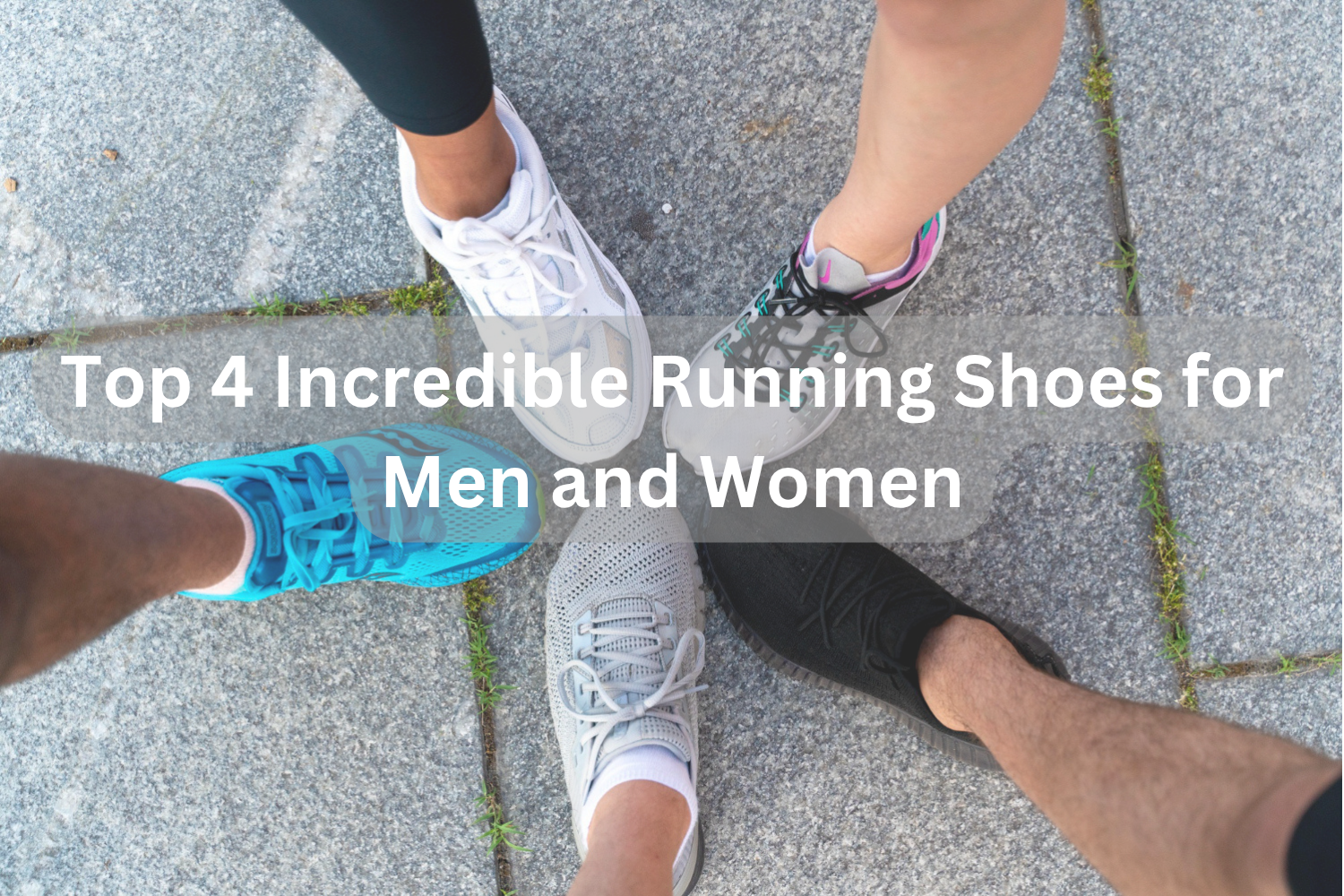Introduction
It’s running, one of the most accessible sports, that doesn’t take much more than motivation, and a good pair of shoes. That last part, the shoes, can make or break your experience though. Not only do the correct running shoes offer to make you comfortable but they help to prevent injuries, improve the performance and to make you enjoy a run.
When it comes to choosing which running shoes are best for your needs, with so many on the market today, there’s no shortage for buyers to become overwhelmed. We’ve rounded up four of the best running shoes for both men and women, whether you’re training for a marathon, running on trails, or simply jogging for fitness. So in this post, let’s find out what makes them special and the ways you can choose the right pair for your feet.
What Makes a Great Running Shoe?
A running shoe is more than just a stylish accessory—it’s a technical piece of equipment designed to enhance performance and protect your body. But what features distinguish a great running shoe from an average one?
1. Cushioning
The cushioning protects by absorbing the impact your feet make when they strike the ground, giving your joints a little extra help. Other shoes house cushioning that offers a softer feel, while there are others that feature significantly responsive but energy returning midsoles with each step. Depending on your comfort needs and your running style is your preference between softness and firmness.
2. Arch Support
Different feet have varying arch types—high, neutral, or flat arches. Shoes with proper arch support prevent overpronation (rolling inward) or supination (rolling outward), ensuring a stable stride.
3. Fit and Comfort
Your shoes must be snug not tight. The wrong shoe can produce blisters, blackened toenails or painful deformities. Pick shoes that accommodate the shape of your feet and, if your feet often swell when you run, go for shoes with a boxy toe.
4. Weight and Breathability
In long distance running, heavy shoes can become a major factor in slowing you down, and lightweight materials are really important. Breathable uppers let your feet breathe and stay cool — which reduces the risk of blisters.
5. Durability
A great running shoe picks up where others fall off, enduring hundreds of miles in the process. In terms of the materials chosen by high quality shoe manufacturers, the outsole and upper, both are durable making the shoes last longer and as durable as they first came out.
The Importance of Gender-Specific Design
The anatomy of male and female feet differs subtly, and running shoe manufacturers take this into account when designing footwear.
Men’s Shoes vs. Women’s Shoes
- Heel Shape: Women tend to have narrower heels, so women’s shoes offer a more tapered heel cup.
- Midsole Cushioning: Women’s shoes often use softer midsoles, considering the difference in weight distribution.
- Arch Support: Some women’s shoes have enhanced arch support, as women are more prone to conditions like plantar fasciitis.
Wearing shoes tailored to your gender can significantly enhance comfort and prevent injuries, so it’s worth considering gender-specific models.
Top 4 Running Shoes Overview
Let’s dive deeper into the top four running shoes for both men and women. These models excel in various categories, from performance to comfort, ensuring that every runner finds the perfect fit.
1. Nike Air Zoom Pegasus 40
Key Features
- Zoom Air units in the forefoot and heel for added responsiveness.
- Engineered mesh upper ensures breathability and flexibility.
- A neutral shoe, suitable for most foot types and running styles.
Pros
- Lightweight and ideal for daily runs.
- Offers excellent versatility—can handle both road and track running.
- Durable construction ensures long-lasting performance.
Cons
- May not provide enough stability for overpronators.
- Some runners find the heel padding too soft.
Who Should Consider This Shoe?
For neutral runners who want a do it all shoe that holds up in sprints, but can also get you through a long run, look no further. And because of its lightweight and streamlined look, it’s also a favourite of casual runners.
2. Adidas Ultraboost Light
Key Features
- Light Boost midsole technology delivers unparalleled energy return.
- Upper made from Primeknit+, which molds to the shape of your foot.
- Incorporates recycled materials, making it eco-friendly.
Pros
- One of the most comfortable shoes on the market, perfect for long runs.
- Stylish enough to double as everyday wear.
- Excellent energy return helps reduce fatigue during long runs.
Cons
- Premium pricing makes it less accessible for budget-conscious buyers.
- Some runners find it too soft for high-speed running.
Ideal Users
The Ultraboost Light is a top choice for long-distance runners who want a blend of comfort, performance, and style. Its eco-friendly design also appeals to environmentally conscious athletes.
3. Brooks Ghost 15
Key Features
- DNA LOFT cushioning provides a smooth and comfortable ride.
- Segmented crash pad helps in absorbing impact and transitions smoothly from heel to toe.
- Available in a wide range of widths to accommodate various foot shapes.
Pros
- Works well for a variety of distances, from short jogs to marathons.
- Great for runners with wide feet due to the availability of width options.
- Provides excellent arch support.
Cons
- May feel a bit bulky for runners who prefer minimalistic shoes.
- Slightly less breathable than other models.
Perfect for Different Running Styles
The Brooks Ghost 15 is designed for both beginners and seasoned runners looking for a reliable, comfortable shoe for long-distance running.
4. ASICS Gel-Kayano 30
Key Features
- Gel technology provides superior shock absorption.
- Features the 4D Guidance System to enhance stability and reduce overpronation.
- Enhanced rearfoot support reduces strain on the Achilles tendon.
Pros
- Excellent for runners with flat feet or overpronation issues.
- Provides top-notch stability and injury prevention.
- Durable enough for heavy use on various terrains.
Cons
- Heavier compared to some other models.
- Takes a few runs to break in.
Best Use Cases
This shoe is ideal for runners who require extra support and stability, particularly those prone to injuries or with a history of overpronation.
How to Choose the Best Running Shoe for You
When selecting the perfect pair, consider the following:
- Foot Type: Identify if you have high arches, neutral arches, or flat feet.
- Running Style: Do you need shoes for speed, long-distance, or trail running?
- Try Before Buying: Visit stores and try shoes at the end of the day when your feet are swollen for the best fit.
The Role of Cushioning and Support in Performance
For example, runners searching for speed might like firmer cushioning for a more responsive feel, whereas someone looking for more comfort on long runs may prefer softer midsoles. Plus, the right arch support is important to keep your posture straight and minimize the possibility of injuries.
Breathability and Comfort: Why They Matter
Having sweat on your feet is uncomfortable and can even cause blisters. Breathable uppers on shoes like mesh fabric keep your feet dry and comfortable and will let you run farther without it feeling uncomfortable to your feet.
Durability: Getting the Most Out of Your Investment
Running shoes have an average life span of 300-500 miles. Runners should keep track of how much mileage they go and look inside their shoes for evidence of wear, such as a blown out midsole or noticeable the outsole.
How to Care for Your Running Shoes
- Air them out after every run to prevent odors.
- Use a soft brush to clean off dirt and mud.
- Avoid machine washing—instead, hand wash with mild soap and water.
Conclusion
The right running shoe can make all the difference in how you are going to run. Whether it’s the comfort of the Brooks Ghost 15, the stability of the ASICS Gel-Kayano 30, the energy return of the Adidas Ultraboost Light, or the versatility of the Nike Pegasus 40 there’s a shoe perfect for every runner. Make your decision using fit, comfort and support as your guide and you will be good to go for many miles.
Frequently Asked Questions
Q: How often should you replace running shoes?
A: Every 300-500 miles or when you notice signs of wear.
Q: Can I use running shoes for other sports?
A: They are best for running, but you can use them for light activities.
Q: Do expensive shoes guarantee better performance?
A: Not always. Fit and comfort matter more than price.
Q: How can I determine my foot type?
A: Perform a wet test by stepping on paper and analyzing your footprint.
Q: Are there running shoes for flat feet?
A: Yes, brands like ASICS and Brooks offer excellent shoes for flat-footed runners.



